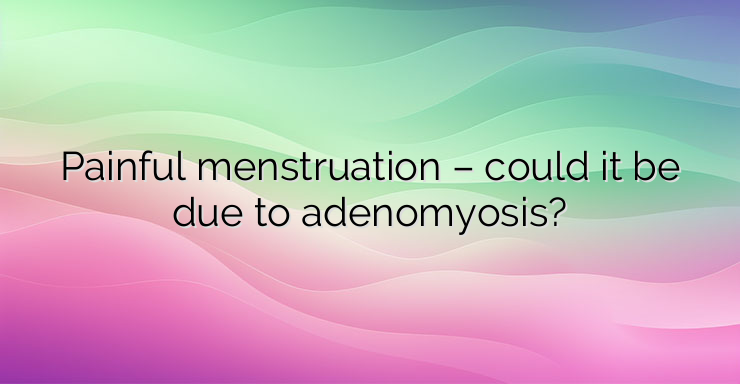Adenomyosis is an abnormal growth of tissue in the muscular wall of the uterus that can cause severe menstrual pain and heavy menstrual bleeding. It is estimated that 1 in 3 women suffer from this gynecological disease, but despite this, adenomyosis is a disease that is little known and difficult to diagnose. It is still believed that menstruation can be painful and bleeding profuse without any disease causing it. A belief that causes many women to ignore these symptoms. Adenomyosis can significantly affect a woman’s quality of life, causing pain during intercourse and fertility problems. What are the causes of adenomyosis? The cells of the endometrium, which is the inner lining of the uterus, are displaced from their natural place and penetrate inside the muscular wall of the uterus. These displaced endometrial cells continue to function in the same way as if they had remained in their original location. With each new menstrual cycle and due to the effect of the hormones synthesized by the ovaries, these cells that have left their place thicken, break down and cause the usual symptoms of adenomyosis. Symptoms In some cases, the disease may not cause symptoms. When it is in an advanced stage, adenomyosis can significantly worsen the quality of life of patients. The most common symptoms are: Very heavy and prolonged menstrual bleeding; Bleeding that is not related to regular menstruation; Severe pain during menstruation; Pain in the lower back and during intercourse; Infertility Adenomyosis and endometriosis These are two very similar diseases. In adenomyosis, endometrial tissue appears in the muscular wall of the uterus. In endometriosis, the endometrium, which is also implanted out of its usual place, can appear almost anywhere in the body, from the pelvis to the rectum, in the ovaries, bladder or even the intestines. Difficult diagnosis A significant problem with adenomyosis is that the symptoms can be confused with those of endometriosis, uterine fibroids or even irritable bowel syndrome. Also, many women find it normal to have painful periods and heavy menstrual bleeding. All this complicates the diagnosis, which is often carried out very late and when the disease is already in an advanced stage. Hysterectomy – complete removal of the uterus – is most often used as a therapeutic approach. This reveals a report of gynecologists from UT Southwestern Medical Center. Doctors often believe that adenomyosis is a condition characteristic of women aged 40-50 years, because that is when the diagnosis is most often made and the uterus is removed. In reality, the disease develops much earlier. Adenomyosis Treatment Hysterectomy – removal of the uterus can be avoided in many cases with proper diagnosis and treatment. If adenomyosis is suspected, transvaginal ultrasound and nuclear magnetic resonance are very accurate and non-invasive diagnostic methods.There is still no approved specific therapy for adenomyosis, but the condition can be controlled with contraceptives or treatments for other gynecological conditions such as fibroids or endometriosis. The problem still remains that the disease often remains imperceptible to patients for a very long time and makes diagnosis difficult. References: https://www.sabervivirtv.com/ginecologia/dolor-regla-que-es-como-afecta-adenomiosis_6201 https://jamanetwork.com/journals/jama/article-abstract/2781869


Leave a Reply